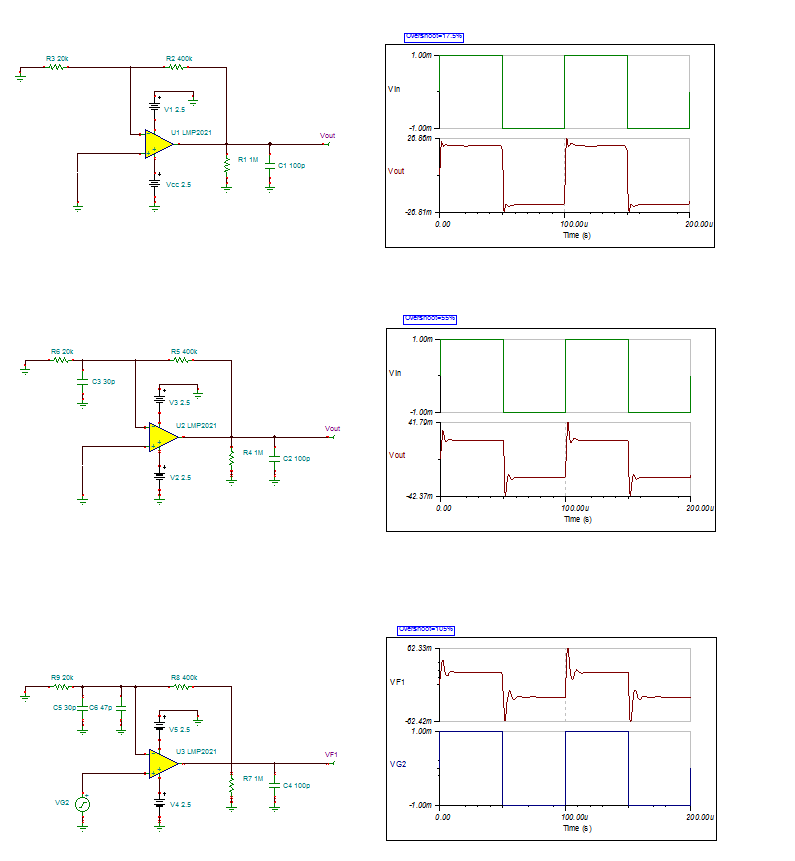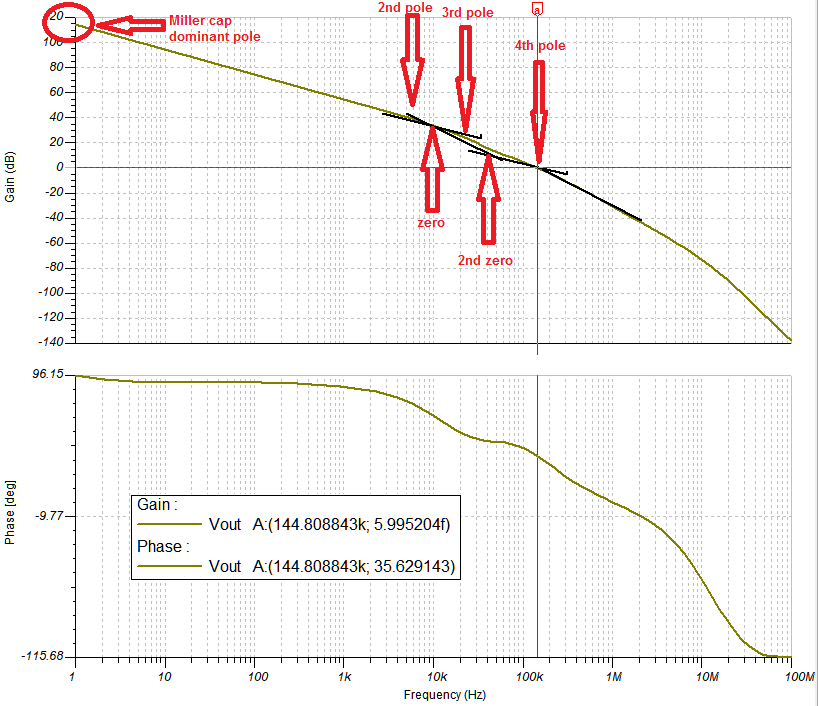Other Parts Discussed in Thread: TINA-TI,
Tool/software: TINA-TI or Spice Models
Hi team,
I'm doing stability measurement and using TINA simulation to check with the result and I found some questions,
1. When I do the stability measurement , add Capacitance=30pF at LMP2021's input and see overshoot% is around 38%(figure 3.),
check with figure 4. and it shows that phase margin is near 30° , but when I do the simulation on TINA, I have to add another Cin=47pF(figure 5.)
to meet same phase margin, so my question is what the difference between real circuit input and TINA simulation's input model ?
figure 2. measurement configuration
figure 3. overshoot % measurement(Add Cin= 30pF)
figure 4. Overshoot v.s. Phase Margin
figure 5. LMP2021 TINA stability simulation
2. Do LMP2021 provide Zout v.s. frequency figure?
Thanks you very much!






